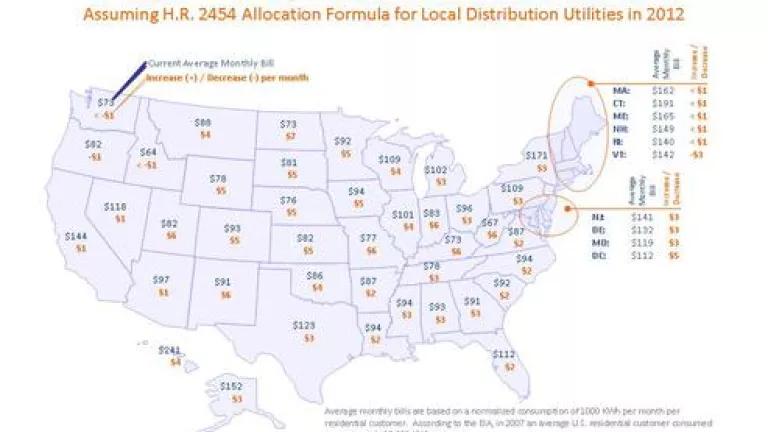
The American Clean Energy and Security Act, now before the Senate, is poised to transform the way America produces and uses energy, and in the face of such major changes, Americans are asking what this new law might cost them. The answer is: very little.
I want to be honest with you: shifting to clean energy will entail some costs. But numerous studies have found that the added price per family will be small.
According to the Congressional Budget Office, America can create millions of green jobs and combat global warming for the cost of 48 cents a day per household. That's about $175 a year, or $15 a month.
That's less than most people pay for Netflix, less than going to see two movies a month. And the return on the investment is extraordinary: cleaner skies, fewer asthma attacks, more job opportunities for friends and family, and the knowledge that you are building a sustainable future for your children. All for $15 a month.
Keep in mind that the Congressional Budget Office produces independent research and is not afraid to release challenging numbers. Earlier this year, it said the economic stimulus plan passed by Congress would hurt America in the long run, and it recently reported that health care reform will cost more than the Obama administration says.
The CBO reached its climate conclusions based on numbers, not politics.
And its findings have been corroborated by other sources. The Environmental Protection Agency found that the overall cost of implementing ACES would be even smaller: between $80 and $111 per household per year. That is less than $10 a month.
The bill also ensures that low- and moderate-income households will not be burdened with these minor increases in energy costs. It calls for selling 15 percent of pollution allowances at auction and using that money to provide energy refunds to families who receive food stamps, senior citizens, and people with disabilities.
The Bill Will Save Consumers Money on Utility Bills
The CBO and EPA reports looked at total costs across the economy. Other studies have examined what the ACES bill will do to your utility bills.
Using data from the EPA and the Energy Information Agency, analysts at MJ Bradley (a research firm that works with PG&E and other utilities) found that your electric bill would be an average of just $2 a month higher if the ACES bill passes. Below is their state-by-state breakdown (and a larger version here).
But this data is missing something important: it does not factor in the numerous energy efficiency measures included in the ACES bill that will save Americans money. Indeed, lots of money--approximately $750 per household by 2020 and $3,900 per household by 2030.
How can you achieve these savings? Thanks to smart incentives to invest in energy efficiency upgrades, ACES will encourage consumers to quickly cut their energy use by at least 10 percent, resulting in a net reduction in their energy bills. Even bigger savings -- 30 percent or more -- can be made as they replace obsolete appliances and inefficient vehicles with state-of-the-art models.
NRDC analyzed what would happen to utility bills when the ACES efficiency measures are factored in. We found that Americans in nearly every state will save an average of $5.99 a month. Even in the few states where savings compared to business-as-usual are not projected, bills will still be lower under ACES than they were in 2007.

No Changes While the Economy Recovers
In this economy, consumers are monitoring every bill and watching every penny. People are rightly concerned about even small increases in monthly expenses right now. But the ACES bill will not go into effect until 2012.
That means there will be no impact on energy prices while we're in the depths of the recession: zero impact in 2009; zero impact in 2010; zero impact in 2011.
History Shows Environmental Regs Don't Cause Price Spikes
I know opponents of climate legislation claim that ACES will cause price hikes (see my colleague Laurie Johnson's post examining how cost data has been misrepresented). We have heard these false predictions before. Do you remember back in 1995? Where you stunned to open you utility bill back then? Was there an enormous spike in the cost of powering your home or business?
That was the year when acid rain regulations went into effect and utilities howled that complying with the new pollution rules would send prices through the roof. My guess is you don't remember your bills from back then, because if they changed at all, it was too minimal to notice.
A national climate law is far more sweeping than the acid rain regulations, but I still believe we will not see dramatic changes in our monthly bills. Rather, we will get a cleaner energy future for just $15 a month--the added cost of one extra pizza per household.
